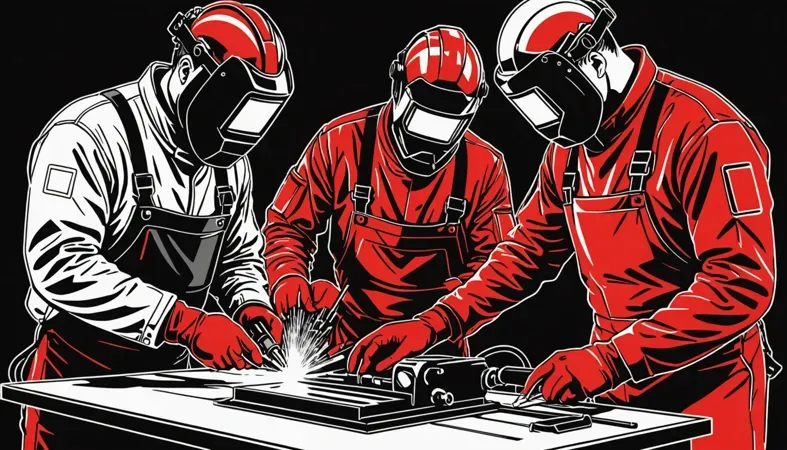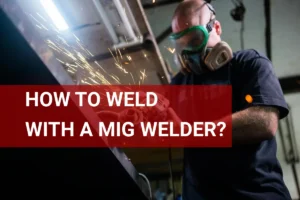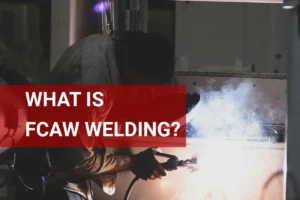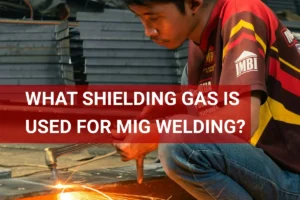What is the Difference Between MIG and TIG Welding? – Techniques, Applications, and Processes
Published on: June 6, 2025 | Last modified: March 4, 2025
By: Joe Carter
MIG and TIG are two popular welding methods. MIG stands for Metal Inert Gas, while TIG means Tungsten Inert Gas.
People are frequently curious about what is the difference between mig and tig welding. Understanding these differences is crucial because it affects your project’s quality and efficiency. From my experience, picking the right method can save time and yield better results.
In this guide, I’ll cover types of MIG and TIG welding, steps to understand MIG and TIG welding, and factors influencing their differences, as well as answering common questions. You’ll see just how these methods stack up against each other, especially when looking at what’s the difference between mig welding and tig welding. Get ready to dive into the nitty-gritty of MIG and TIG.
Contents
- What’s the Difference Between MIG and TIG Welding?
- What’s the Difference Between MIG and TIG Welding?
- Types Of MIG and TIG Welding
- Steps to Understanding MIG and TIG Welding
- Factors Influencing the Differences Between MIG and TIG Welding
- Real-World Applications of MIG and TIG Welding
- Frequently Asked Questions (FAQs)
- Conclusion
- References
What’s the Difference Between MIG and TIG Welding?
MIG welding uses a continuous wire feed and is great for quick jobs. TIG welding uses a tungsten electrode for precise control and produces cleaner welds. You’ll find MIG in automotive work and TIG in aerospace due to its high-quality finish.
What’s the Difference Between MIG and TIG Welding?
MIG (Metal Inert Gas) and TIG (Tungsten Inert Gas) welding are two popular MIG and TIG welding processes. MIG uses a wire feed to automatically supply the filler material, while TIG uses a non-consumable tungsten electrode to create the weld. MIG operates at higher speeds, making it suitable for thicker materials and faster production. In contrast, TIG produces finer, more precise welds, ideal for thin materials where control is crucial, with travel speeds usually around 5 to 11 inches per minute (12.7 To 27.9 Cm/min).
MIG welding is often easier for beginners because it’s more forgiving with material gaps. It operates within a voltage range of 18 to 26 volts and works on metals like steel and aluminum. TIG requires more focus and skill since you manually feed the filler rod, operating between 10 to 180 amps for most applications.
Choosing the right process for your project is essential. When I started, I struggled with accuracy in MIG, especially on thin sheet metal. Switching to TIG resulted in cleaner welds and the precise finish I wanted!
Types Of MIG and TIG Welding
What are the types of each welding process?
MIG Welding
MIG stands for Metal Inert Gas welding. It’s a fast process that uses a spool of wire as the electrode. Unlike TIG, you don’t control the filler material separately. In MIG, filler material feeds automatically while an argon-carbon dioxide mix shields the weld pool, making it easier for beginners.
TIG Welding
TIG, short for Tungsten Inert Gas welding, uses a non-consumable tungsten electrode. You’ll manually feed the filler metal. The key difference is in heat control; TIG offers more finesse than MIG, allowing for cleaner welds with better penetration. If you’re starting a project, it’s crucial to know where to source metal that suits your welding needs.
Flux-cored Arc Welding
Flux-cored welding uses a tubular wire filled with flux that generates gas to shield the weld. It’s similar to MIG but performs better outdoors in windy conditions. It’s less sensitive to wind than MIG, making it suitable for specific environments.
Gas Tungsten Arc Welding
This process is another name for TIG welding, focusing on precision and clean welds. Both terms refer to the same technique; the names differ based on emphasis on tungsten or gas production.
Gas Metal Arc Welding
This is an alternative term for MIG welding, involving the same fast, automatic wire feeding. Both terms refer to the same process; it’s just a broader name for different applications in metal welding.
We have now covered the various types of MIG and TIG welding. Next, we will explore the steps to understanding them.

Steps to Understanding MIG and TIG Welding
Here are the essential steps to grasp the differences between MIG and TIG welding.
Identify the Welding Process
MIG (Metal Inert Gas) welding uses a continuous wire feeder to create an arc between the wire and the material. In contrast, TIG (Tungsten Inert Gas) welding involves a non-consumable tungsten electrode. Your choice depends on project requirements. Regardless of your specific welding needs, exploring what kind of welder is required can assist in determining the most suitable equipment for your tasks.
MIG is often preferred for fast production with minimal skill required. I’ve seen experts complete a MIG weld in seconds. TIG offers better control and stronger results but takes longer to master.
Evaluate the Materials
Your choice of material significantly impacts whether to use MIG or TIG. MIG works well with thicker materials, like steel and aluminum, while TIG excels with thinner materials and exotic alloys. In ideal conditions, MIG welding can achieve speeds over 600 inches per minute! The size of wire you select is crucial for achieving optimal weld quality, and you can explore more about appropriate wire sizes for a welder to ensure your welding project is successful.
TIG welding allows for higher precision and a cleaner finish, especially for stainless steel. Choosing the wrong method can lead to poor welds, so select wisely.
Consider the Electrode Type
MIG welding uses a continuous solid wire electrode, minimizing the need for frequent reloading. TIG uses a tungsten electrode and a filler rod. MIG wire typically ranges from 0.030 to 0.045 inches (0.76 To 1.14 Mm), while TIG filler rods range from 1/16 to 1/8 inches (1.5 To 3.2 Mm).
Choosing the right electrode is crucial! An incorrect electrode can lead to poor melting or weak joints, affecting weld quality. The composition of your filler rod can greatly influence the outcome, so ensure compatibility.
Determine the Skill Level Required
MIG welding is suitable for beginners. You can quickly learn the basics and start simple projects. TIG welding requires more practice; it’s skill-centric and often preferred for artistic or intricate designs.
Many newcomers find MIG forgiving. While TIG offers finesse, the steep learning curve can frustrate those who lack patience. Assess your comfort level before diving in.
Assess the Equipment Needed
Both methods require different equipment. A basic MIG welder ranges from $200 to $1000 USD. In contrast, TIG welders typically start around $800 and can increase significantly based on features and settings.
Understanding the components of a welding system is essential for effective operation, especially for those curious about a basic semiautomatic welding system.
Consider the shielding gas: MIG usually uses carbon dioxide or a mix, while TIG generally requires argon or helium. From experience, investing in the right machine noticeably improves your work quality.
We covered the basics of MIG and TIG welding here. We will now cover the factors that differentiate MIG and TIG welding.
Factors Influencing the Differences Between MIG and TIG Welding
What factors affect MIG and TIG welding capabilities?
Welding Speed
MIG welding is generally faster, with speeds of 5-10 inches per minute (127-254 Mm/min). TIG welding runs at 2-4 inches per minute (51-102 Mm/min), making it slower but more precise.
Heat Input
MIG welding has a higher heat input due to its continuous wire feed, reaching up to 1,000°F (538°C) or more. TIG welding uses a non-consumable tungsten electrode, allowing for precise heat control, which is vital for thin materials.
Metal Thickness
Metal thickness is crucial! MIG welding works better with materials up to 1 inch (25 Mm) thick. TIG excels with thinner materials below 1/8 inch (3 Mm), making it the preferred choice for delicate jobs. For those setting up their welder, knowing how to wire a 220 outlet for a welder is an essential step in ensuring proper power supply.
Filler Material
MIG welding uses a continuous wire filler, making it efficient for metal setups. TIG welding allows for various filler rods, offering exceptional customization for different materials.
Operator Skill Level
MIG welding is user-friendly and ideal for beginners; it requires less skill to master. TIG welding demands more experience, precision, and control, as you’re managing the torch and filler rod simultaneously.
We covered the factors impacting MIG and TIG welding differences. We will now cover their real-world applications.
Real-World Applications of MIG and TIG Welding
Knowing where each welding type shines can help you choose the right one for your project.
| Application | MIG Welding | TIG Welding |
|---|---|---|
| Automotive Repair | Ideal for quick repairs and production lines | Used for precise or intricate parts requiring high quality |
| Aerospace | Less common due to quality requirements | Preferred for thin materials and critical components |
| Manufacturing | Great for mass production of thick metals | Suited for custom, lightweight structures |
| Artistic Projects | Useful for speed and medium quality | Best for detailed artistic applications |
| Home Repairs | Quick fixes for various household projects | Ideal for delicate repairs or adjustments |
This table highlights common applications. When I was starting, I realized choosing the right method based on the task at hand can be a game-changer!
We have now covered the practical uses of MIG and TIG welding. Next, we will address common questions about these techniques.

Frequently Asked Questions (FAQs)
Now let us look at the FAQs. I typically get asked the following questions:
What is Better, TIG or MIG Welding?
What’s better, TIG or MIG welding? The answer depends on your specific needs. MIG welding is faster and easier, making it great for beginners. TIG welding offers precise control and is ideal for thin materials with a cost of around $1,500 (1,200 Euros) for an entry-level machine.
Is a Beginner Welder MIG or TIG?
For a beginner welder, MIG welding is often the best choice. MIG welding uses a continuous wire feed, which simplifies the process and reduces the learning curve. It’s also quicker, making it ideal for projects where speed matters, like fabrication.
What Type Of Welding is Best for Beginners?
The best type of welding for beginners is MIG welding. Its easy-to-use setup means you can start with minimal training, reducing frustration during your first tries. Plus, most beginners can master MIG with just a few hours of practice.
What is TIG Welding Preferred for?
TIG welding is preferred for projects requiring precision. You can control the heat and add filler material separately, allowing you to work on thin metals like aluminum and stainless steel. This results in less warping and cleaner welds, which is key for aesthetic applications, highlighting its advantages among various welding processes.
What is the Difference Between TIG and Stick Welding?
The difference between TIG and stick welding lies in their welding process. TIG produces cleaner welds but requires more skill, typically best for thin materials. In contrast, stick welding is more versatile, suitable for outdoor applications, with equipment prices around $100 (95 Euros).
Conclusion
We covered different aspects like types of MIG and TIG welding, steps to understand both methods, and factors influencing their differences. We also touched on frequently asked questions about what’s the difference between MIG and TIG welding. Each section helped clarify how these welding techniques vary in application, equipment, and results.
To sum it up, the key difference between MIG and TIG welding lies in their processes. MIG uses a continuous wire feed for faster work, ideal for thicker metals, while TIG employs a non-consumable tungsten electrode for precision and control on thinner materials. Wishing you success in your welding projects, understanding this basic difference can greatly improve your outcomes.
For more insights and resources to deepen your welding knowledge, visit What is Welding, where we are committed to providing you with the latest technical expertise.
References
- ISO. (2017). ISO 3834: Quality Requirements for Fusion Welding of Metallic Materials. Geneva, Switzerland: ISO.
- Norrish, J. (2006). Advanced Welding Processes. Boca Raton, FL: CRC Press.
Joe Carter is a retired welding professional with over 40 years of hands-on experience in the industry, spanning ship repair, structural welding, and even underwater projects. Joe is a master of MIG, TIG, and Stick welding. Passionate about mentoring the next generation of welders, Joe now shares his decades of expertise and practical insights to help others build rewarding careers in welding.
Filler Metal, Metal Fabrication, MIG Welding, TIG Welding, Welding, Welding Applications, Welding Processes, Welding Techniques







